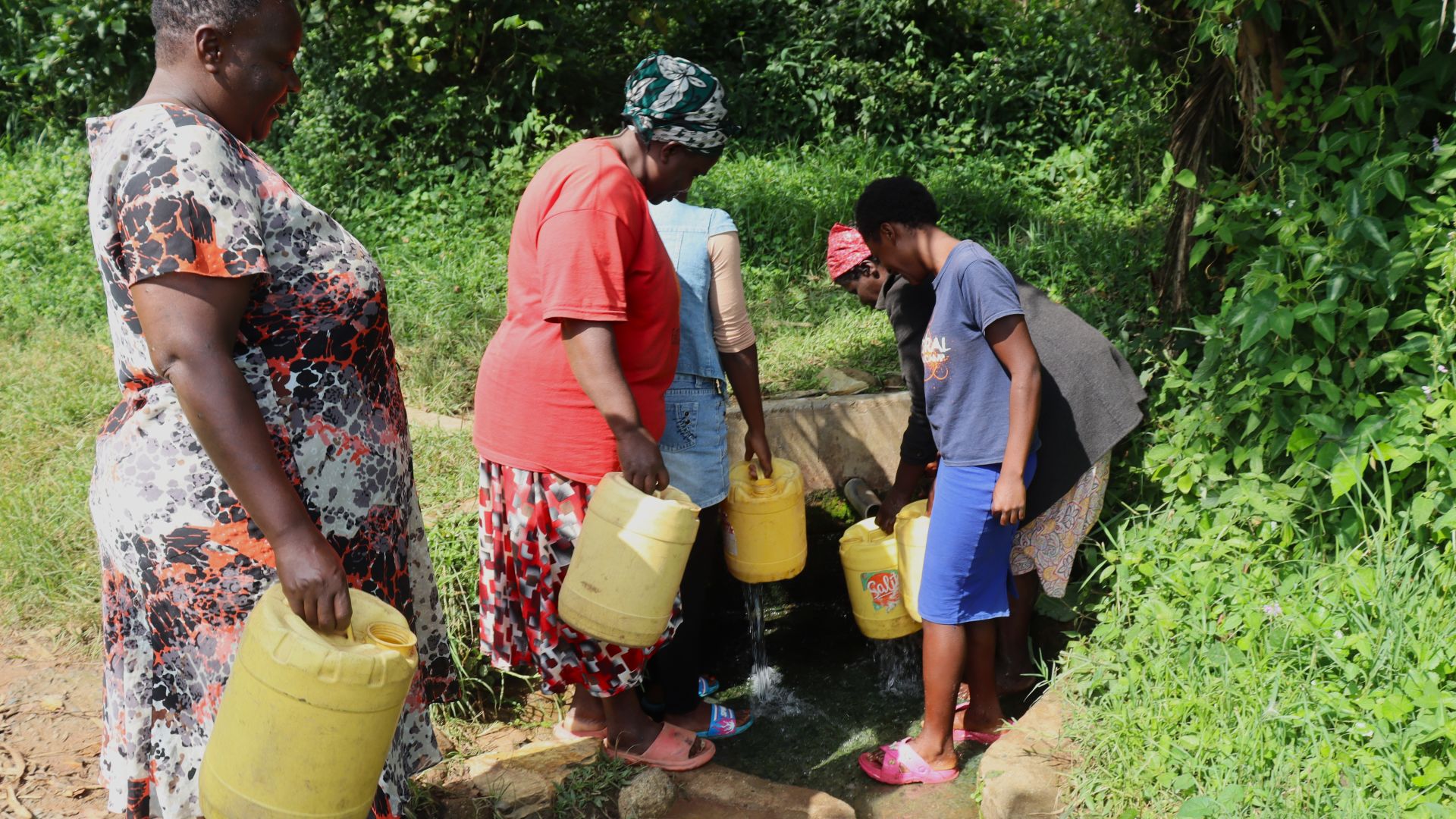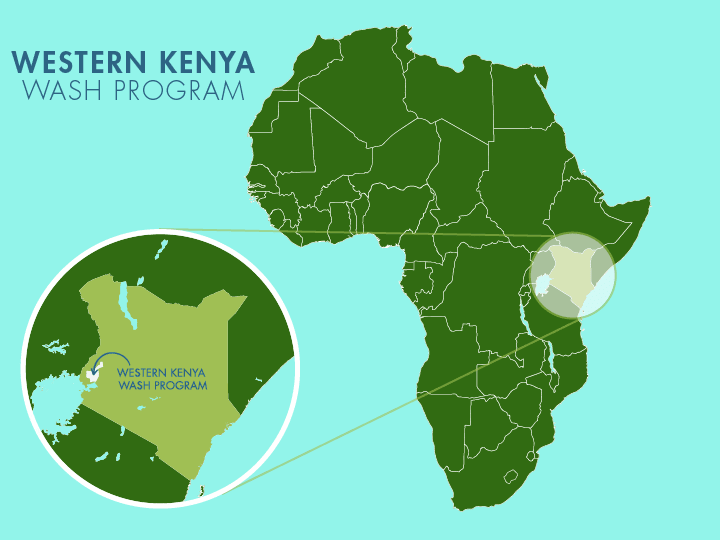Waiting is a task the Inguvuli Community is well acquainted with. Three hundred and fifty people rely on the Mateiya Spring, and during the dry seasons, people from neighboring communities also come to utilize the source, making long lines even longer.

Field Officer Amos Emisiko described the state of the spring, "The spring area is very bushy, the spring box is open to contamination as part of the spring box is exposed. The flow is completely worn out, and some parts of the stairs [are] worn also. People are using the spring box as the access point and a foot path above it. The stones are partly exposed due to erosion happening above the spring box. There is little water escaping beneath the flow, showing [that] the clay soil either washed away or was not well done, enabling [the] escape of water."

These structural problems directly shape how families experience daily life. For Robai Muronji, 54, the burden is constant. She is a local farmer and mother who often has to triage her tasks, as there just aren't enough hours to do everything, collect the water necessary to care for her family, and manage her farm.

Ms. Robai Muronji.
"This waterpoint is very reliable in this community. During the drought season, it serves many people from this village. People come from far, this makes our waterpoint crowded, so you have to wait for some time. If the drought is severe, we can wait for close to 20 or 30 minutes for the people ahead of you to fill their jerricans," Robai explained.
Thirty minutes may seem manageable — until you remember Robai and her children must make the trip five times a day. They use a minimum of about twenty-six gallons of water daily. It's a heavy burden to carry all that home, in multiple trips, knowing the work for the day is just beginning.

"When my children are at school, [I] am left alone to fetch water. It is a bit tiresome. For my children, I think they could be doing other things like making food on time, washing their clothes, and making the house early. The time they use to queue at the waterpoint is enough to carry out many activities. My husband always helps to feed the animals. Some days, [I] am occupied with church activities, leaving him and [the] children to carry out the whole work, which is very heavy," Robai continues.

Robai washes dishes with the precious resource.
The burden Robai carries is great. She worries about accomplishing all that she needs to, to care for her family, even when they all work together, it's hard to move forward.
She also worries about the state of the spring and its safety. It was once protected, over forty years ago. She has watched it decay over the years and worries about how much longer it will last.
"The area above the wall is slowly wearing out, with the stones being exposed. The spring was done [a] very long time ago, and you know this is water, so the bricks don't have strength right now. It was done using the old technology, so I may say it is not [as] strong as it used to be," she said.
But there is hope!
We plan to restore and protect the spring, giving Robai confidence that it will provide safe, reliable water. Wait times will be reduced when the flow is efficiently captured, making the time it takes to fill a jerrycan much shorter.

"Water is life. Imagine [a] world without water, and that is what makes this planet unique. Water supports both animal and plant life. We require water for everything, even in hospitals," Robai remarked.
"If the spring is done well, [I] am hopeful the time used will reduce significantly, creating more time for other activities."
With protection, education, and ongoing support, Mateiya Spring will no longer be a place of waiting and worry but of renewal. For Robai and hundreds of her neighbors, every drop will represent more than clean water — it will mean time, strength, and the freedom to build a better future.
Steps Toward a Solution
Our technical experts worked with the local community to identify the most effective solution to their water crisis. They decided to safeguard the existing flowing spring.
Spring Protection
Springs are natural water sources that originate from deep underground. As water travels through various layers of the earth, it undergoes a natural filtration process, making it cleaner and safer to drink. To protect these spring sources from contamination, we construct a waterproof cement structure around layers of clay, stone, and soil. This design channels the spring water through a discharge pipe, facilitating easier, faster, and cleaner water collection.
Chlorine Dispenser
As an extra measure towards water quality safety, uniquely engineered chlorine dispensers are installed at all of our spring protection projects so community members can treat their water with pre-measured doses of chlorine. The chlorine treats any possible contamination and stays active for two to three days, ensuring water stays safe to use even when stored at home. Chlorine delivery and maintenance of the dispensers are part of our ongoing community support.
Community Education & Ownership
Hygiene and sanitation training are integral to our water projects. Training is tailored to each community's specific needs and includes key topics such as proper water handling, improved hygiene practices, disease transmission prevention, and care of the new water point. Safe water and improved hygiene habits foster a healthier future for everyone in the community. Encouraged and supported by the guidance of our team, a water user committee representative of the community's diverse members assumes responsibility for maintaining the water point, often gathering fees to ensure its upkeep.

 Protected Spring
Protected Spring
 Rehabilitation Project
Rehabilitation Project


















